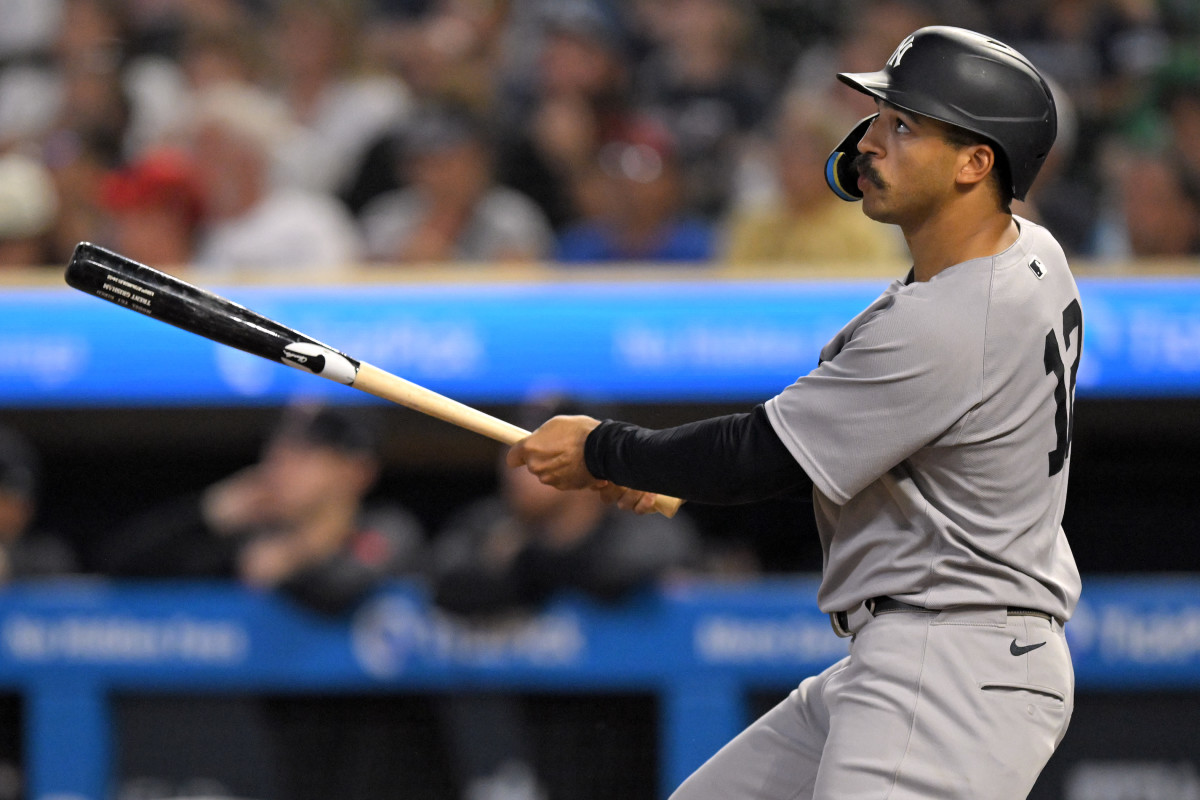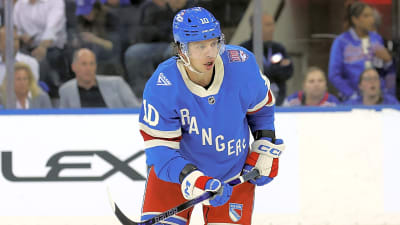
Highlights:
-
The qualifying offer sits at $22.025 million for one year.
-
Trent Grisham finally paired patience with real damage at the plate.
-
If he declines, the Yankees get a late comp pick and keep flexibility.
With the World Series scheduled to start in just a few days, the clock is about to start on qualifying offers. For the New York Yankees, that means a tough decision.
Their most interesting position-player call is in center. Trent Grisham just put up the version the club always hoped for: power you can feel, walks that don’t go away, and enough stability to write his name in ink. Then October arrived, the bat cooled, and some of the center field bounce looked a half-step light. Classic Yankees problem: do you buy one more year, or do you take the pick and shop?
The Question In Plain English
A qualifying offer isn’t a commitment ceremony. It’s one season at $22.025 million. If he declines, you pocket a draft pick and stay nimble. If he accepts, your tax bill swells and he can’t be moved without consent until mid June.
That’s the math, minus the ripple effects.
The Case For Yes
Grisham didn’t fake it.
The quality-of-contact jump showed up all summer. Fewer emergency swings, more balls launched on purpose, and the walk rate stayed sturdy. That’s how you land in the two-to-three win neighborhood even when the batting average isn’t pretty. Also, the market helps you. It’s a thin center field class. A 29-year-old with pop, patience, and playable defense is going to find multi-year money. Make the offer, let the market do the work, and plan on a decline.
The Case For No
If he says yes, the number isn't just a number.
The luxury tax turns $22 million into a larger real cost, and early-season flexibility gets tight. The glove is the other worry. Grisham’s calling card has been plus defense in center; this year looked closer to neutral or worse. If that’s trend, not noise, you’re paying center field money for a corner profile. O
ctober didn’t help the optics either. Pitchers shrunk the zone, swing decisions followed, and the line went light. It's a small sample size but the kind owners remember when they have to pull out the checkbook.
What Actually Changed In 2025
He got to his A swing more often and punished the middle third of the strike zone. He had a better launch, better barrels with the same patience. The gains weren’t built on cheap shots. He looked like a hitter who trusted his plan and hammered mistakes.
In 143 games, Grisham slashed .235/.348/.464 with a .811 OPS, 34 home runs and 74 RBI. The batted-ball file says it wasn’t a mirage with a 91.1 mph average exit velocity, 46.4% hard-hit, 14.2% barrel rate, with a quality-of-contact gap that showed up in .353 wOBA vs. .377 xwOBA. Basically, he hit the ball hard, often, and probably left a little on the table.
That usually is not a fluke.
Can It Hold
The underlying stats indicate that Grisham is more likely to maintain it than lose it.
Barrels and flight age better than batting average luck, and the walk skill do. Two watch items though are his defense and the home run rate.
If the glove doesn’t bounce back toward even and the homers settle a tier lower, then the Yankees are paying real money for a corner-ish bat. If the glove steadies and most of the thump sticks, one year at this number is fine on a Yankees payroll.
October Check-In
The playoffs, however, were a He didn’t bring the regular-season swing into the tournament. Better plans beat him inside the zone and just off it. That’s a footnote until it repeats, but it sits in the file when you’re writing checks.
The lights came up and Grisham went dim.
In sevengames, he slashed .138/.219/.207, 3 BB, 10 strikeouts and a walk.
It is a small sample, sure, but pitchers squeezed him just off the edges and he never cashed in. With teams honing in on being careful with Aaron Judge and Giancarlo Stanton, Grisham needed to step up.
And he did not.
It’s the kind of October box score that sticks to a front office whiteboard when they start pricing risk.

The Decision And The Future
If the Yankees extend the qualifying offer and Trent Grisham declines—the likeliest outcome in a thin center-field market—spring gets straightforward.
Jasson Dominguez comes to Tampa with a real shot to open in center as a league-average bat with lift left in the tank. He showed flashes of the full package this year. He’s a switch-hitter who can do damage when he’s on time, a walk rate that keeps him afloat when he’s not, and enough carry off the barrel to punish middle-third mistakes.
And, he’s still only 21 years old.
It also gives the Yankees room to slow-cook Spencer Jones instead of forcing it. Jones just spent the summer looking like a super star on the rise, the kind of 35-homer, .900-OPS thunder that bends a game even when he swings through a few. When he was healthy, that is.
He’s a left fielder first with emergency-center range, and the plan should read like this: master hitter’s counts, punish fastballs you’re supposed to hit, and let Triple-A breaking balls teach you to lay off the bait. When he proves it, you make room for him on the big league roster.
If Grisham accepts, the board changes but the upside doesn’t go away.
You roll out Grisham in center most nights and still feed Dominguez 450-plus plate appearances across left and center with pinch-run and matchup value baked in. Jones waits, which is not a crisis
The bonus here is clubhouse sanity. You’re not betting the spring on two kids at once while the rotation heals and the schedule bites. You get real on-base skill and 30-homer threat in the middle, plus two blue-chip athletes ramping behind it.
Where Dominguez sits right now is encouraging. He was roughly league-average by the big measures, with a hard-hit profile and an expected line that suggests there’s another gear once the swing decisions tighten. Where Jones sits is loud and simple: the strike zone is big, the damage is bigger. Live in advantage counts, hold the chase to something reasonable, and his athleticism covers the rest. If the chase creeps, you reset him at Scranton without drama. If he holds the zone, he’s jet fuel in July.
Strip it down and the qualifying offer is more than a number.
If Grisham declines, Dominguez gets center and Jones arrives when he truly forces it. If Grisham accepts, you buy one year of stability up the middle, give Dominguez a clean lane to grow, and stage Jones for the summer push. Either path keeps 2026 intact. Either path lets the kids breathe. And either path beats panic-trading in May because you ran out of grown-ups in center.
Verdict
Issue the qualifying offer. The bat gains look real enough, the market leans toward a decline, and the downside of an acceptance is tolerable for one season. Either you get a useful one-year bridge in center or a draft pick for your trouble. That’s a win either way—like finally finding your old Discman and it still works.
More must-reads:
- Albert Pujols, Angels end talks regarding managerial opening
- MLB playoff takeaways: Blue Jays push ALCS to Game 7
- The 'Most two passing touchdown NFL games' quiz
Breaking News
Trending News
Customize Your Newsletter
 +
+
Get the latest news and rumors, customized to your favorite sports and teams. Emailed daily. Always free!








